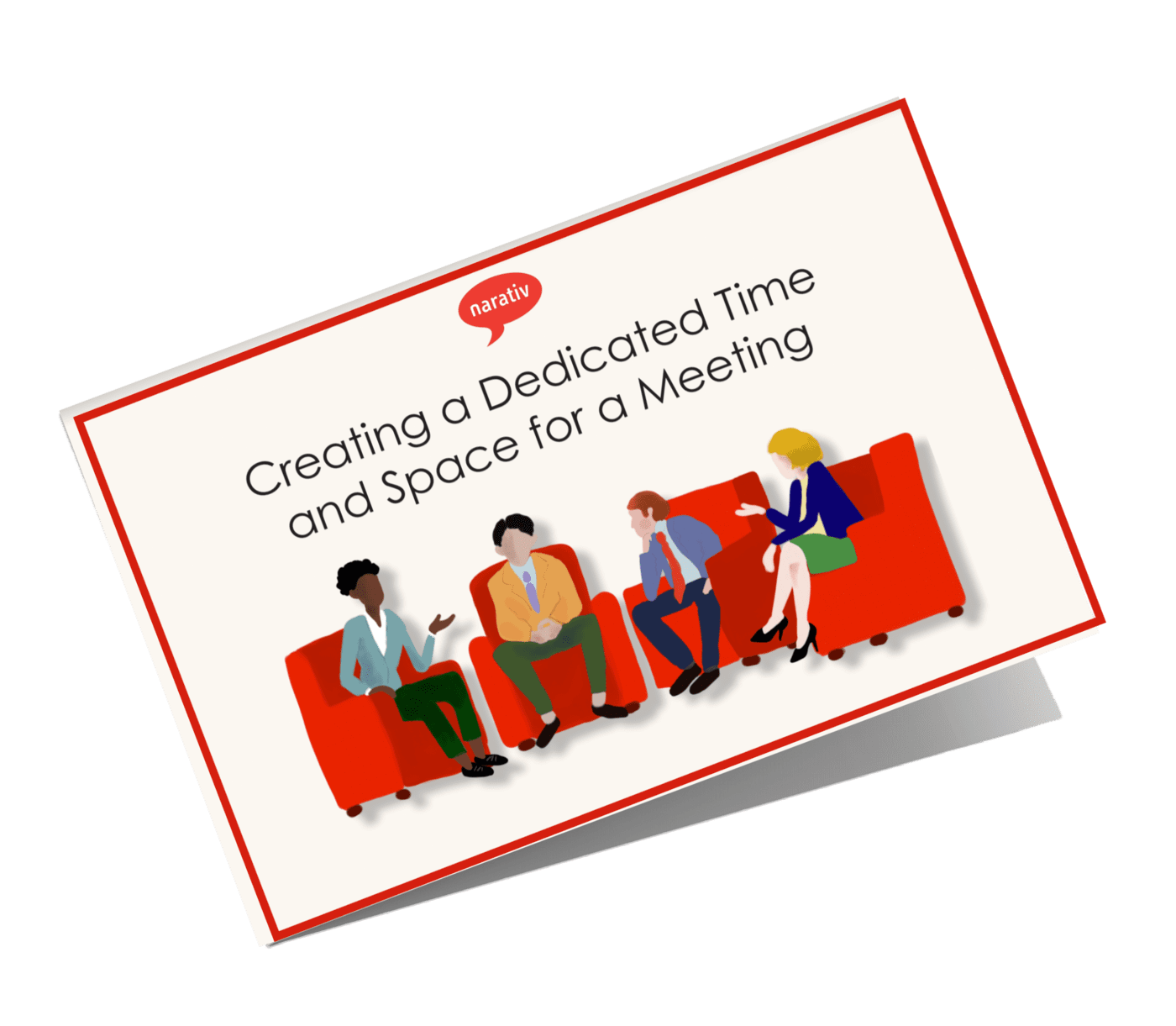Though most people try their best to be decent to others, there is one major issue to consider when it comes to building empathy in the workplace: We are each the main character in our own story.
The things we see through our own eyes and the experiences we have throughout our lives color what we know about the world and what we think about the others we meet. It’s easy to come to the conclusion that, as the main character, the thoughts and opinions our experiences help us form must inevitably be correct.
As we get older, we learn to think outside ourselves in different ways to maintain our relationships and grow as a person, but most of the time that framing of ourselves as the main character is a constant in our worldview.
The one exception to this is when we are caught up in a story. Suddenly, our framing shifts and we are shown the world through the eyes of someone else for a while. The power of a good story is that it allows us to take the new perspective back with us when we return to our own frame of reference. That perspective shift might go on to change the way we see and treat others. It may change the way that we resolve conflicts, or perhaps how we look at the conflict to begin with. Experiencing life as a different main character every now and then is key to building empathy in the workplace.
One of the core tenets of our work here at Narativ is to help bring these tools for shifting perspectives into the workplace. We believe that the more colleagues engage with one another’s stories, the better a workplace will function—on both the personal and professional levels.
4 Benefits of Using Storytelling to Build Empathy in the Workplace
There are a number of ways to try and introduce more empathy to the workplace, but the fastest track by far is through storytelling. Not only does a culture of storytelling build more empathy, but it also does it in a deeper and more complete way than other team-building methods might.
Here are 4 reasons why storytelling is the key to making your workplace a much more empathetic place:
1. Humanizing Experiences
A lot of empathy comes from shared experiences. This is true in many settings. There’s a reason you may feel your siblings understand you in a way few others do and for that feeling of connection to someone when you find out they went to the same college as you.
Unfortunately, it’s impossible for every person to have every human experience—this means that when we’re trying to broaden empathy in the workplace, we need a way to make up for that. Storytelling easily opens a world of different experiences and, more importantly, it humanizes each of them.
Sometimes the experiences of a group we don’t belong to seem far removed from anything we’ve ever experienced, making these perspectives hard to take into account when forming our worldview. Even if you’ve met people from those groups, and even if you see them every day, it can be hard to make a connection because their experiences seem distant from yours..
However, as soon as storytelling enters the picture, everyone in a group, no matter their background, is transported with the teller into their world, feeling the impact of the experience alongside them. Once stories are introduced, those far-off experiences take on a very nearby and very human face. Empathy in the workplace is built heavily on recognizing how life experiences have shaped each individual’s values, beliefs and behaviors.
2. Encouraging Active Listening and Learning
Once you’ve had your eyes opened by the experience of learning you were completely wrong in your assumptions about someone, it’s difficult to close them again. If a group of colleagues has the chance to realize how much they didn’t know about the people they work with, it will be difficult to return to old habits.
After you’ve built up and encouraged a culture of workplace storytelling, you’ll find that your people move from making assumptions about one another to assuming they don’t actually know the other person’s full story. This will naturally lead to more questions, more listening, and more desire to learn what motivates the people around them.
3. Bridging Differences
Again, it’s impossible to have every human experience, and it’s sometimes difficult not to feel a sense of distance from someone whose background, culture, challenges, and opinions are vastly different from yours. One difficulty many businesses have when introducing new DEI initiatives is bridging those gaps and helping people from completely different groups communicate and work well together.
Not only are stories a window into entirely new experiences, they’re also a way to help people realize the things they do have in common. No matter where two people are from or what their values are, they will always have something in common. It could be simple like a shared hobby or music taste, or it could be life-shaping like having been raised by grandparents or being from a military family.
Recently, Narativ facilitated a DEI initiative at a Fortune 500 financial company. We coached 5 leaders from various backgrounds through telling stories about times when they were actively excluded and discriminated against or having to adapt to a new normal.
These individuals shared stories of struggles they’d had as a parent of an Autistic child, stories of learning English as a first-generation immigrant, and stories of times they’d faced prejudice for their religious beliefs. The stories illustrated how these times of struggle helped to shape the kind of leader they wanted to be and the actions they took as executives in this company to try to right some historical wrongs that were still affecting their own employees. Their stories led to a discussion where the leaders were able to connect through similarities in their experiences, which generated a rich and productive dialogue, and eventually actions that changed DEI in their company in such a way that those that the policy changes were for, felt a sense of ownership over them.
A well-functioning, diverse, and inclusive workplace springs from not only an appreciation of how different everyone is, but also from a realization of how everyone else is not quite as different from us as we thought.
4. Challenging Biases and Stereotypes
Everyone has biases. Anyone who claims not to is naive or lying. The community you grew up in inevitably had certain ideas about what people from a different community were like, and even if you eventually grew up to challenge those ideas, certain biases and assumptions have deeper roots than we may realize.
The more stories people in a diverse workplace share, the more inherent biases are worn away. No one ever truly fits into the stereotypes about their race, culture, sexuality, or anything else, and listening to others share their stories is one of the easiest ways to learn that for yourself.
As the stories shared in your workplace continue to break down stereotypes, a new sense of community will arise as barriers are broken down and your workplace becomes its own broadly inclusive in-group.
Making Empathy in the Workplace Part of Your Story
Stories provide a gateway to escape the limitations of our worldview. When everyone in your workplace gets the chance to see each of their coworkers as the main character in a different story, it will become much easier for them to communicate, resolve conflicts, and show patience with each other. If you start using storytelling to foster a greater spirit of empathy and inclusivity in your company, you will continue to see the effects and benefits ripple outward for years to come because storytelling humanizes experiences, bridges differences, challenges biases and stereotypes, and encourages active listening and learning.
By incorporating storytelling into the workplace culture, organizations can create a more empathetic and inclusive environment where individuals understand and relate to experiences that are different from their own, fostering collaboration, understanding, and ultimately driving better outcomes.
If you would like to know more about how Narativ can help you lay the foundation for a culture of team building storytelling in your workplace, visit us here.




